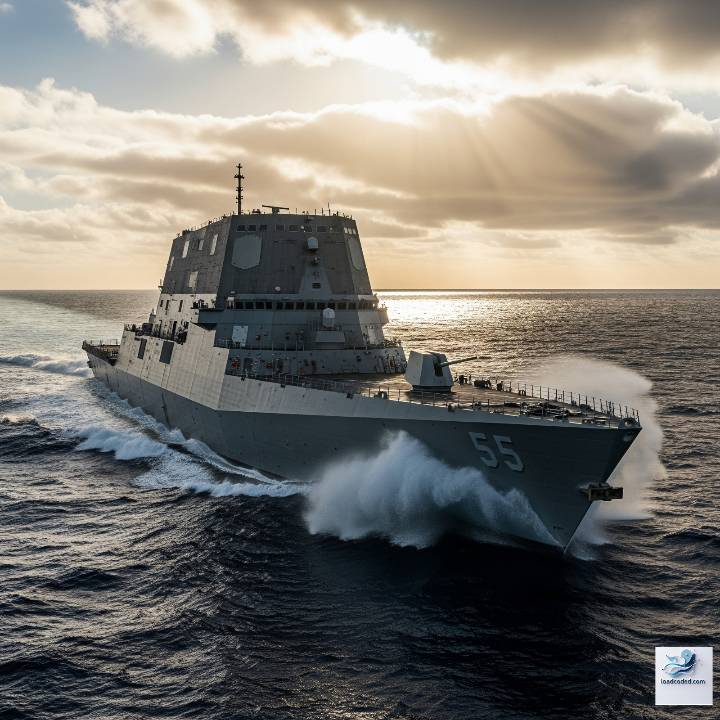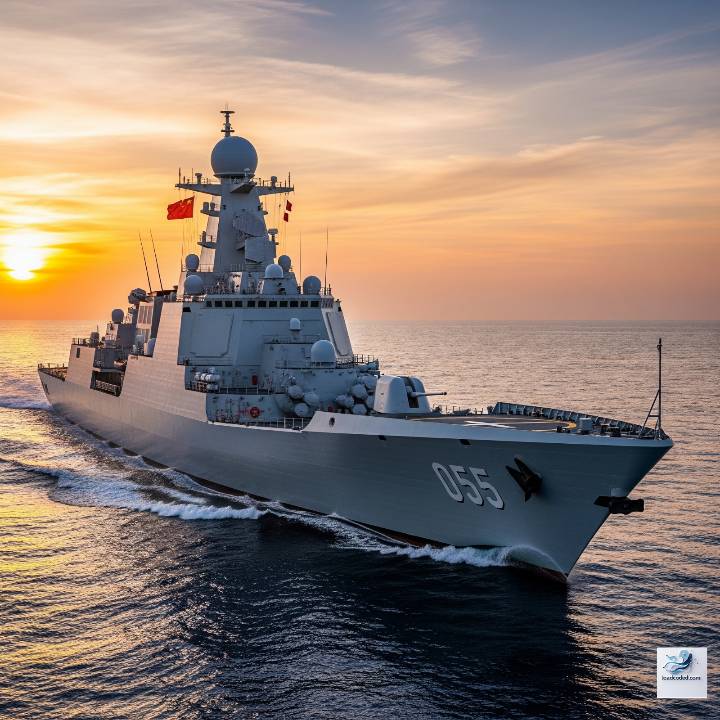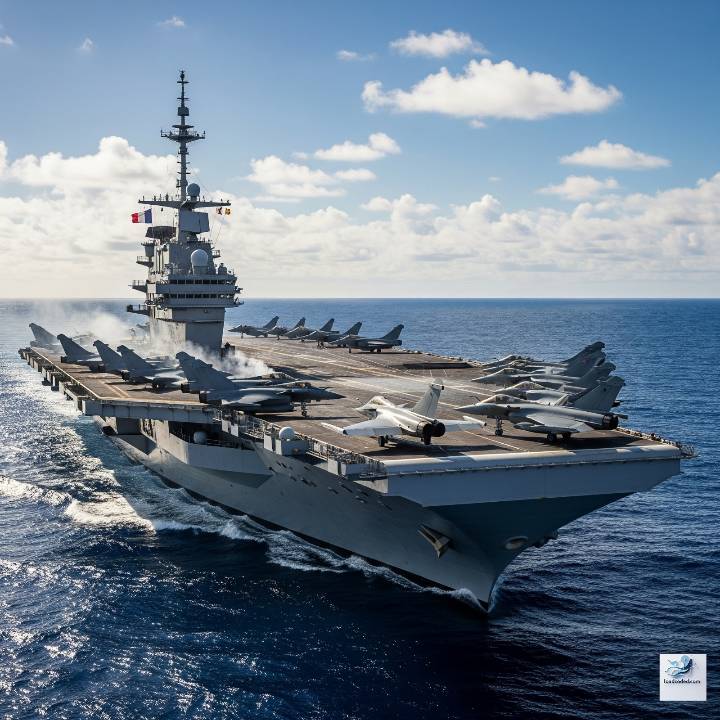Which Country Has the Most Powerful Ship? A Global Naval Power Analysis
Who rules the seas in 2025? Find out which country has the most powerful ship and owns the most capacity in the sea, how it works, and why the U.S. Navy still leads.
Which country has the most powerful ship?
The most powerful ship in the world today is widely regarded as the United States Navy’s USS Gerald R. Ford (CVN-78), but still people still ask, and keep asking, the crown jewel of modern naval engineering. This blog post explores what makes it superior, how it compares to emerging naval giants like China, and why it remains the standard for naval power projection even as other nations race to catch up.
1. Naval Power: Displacement, Capability, and Reach
Which Country Has The Most Powerful Ship
What Makes a Warship “Powerful”?
Naval strength lies in more than hull count. A ship’s power encompasses:
- Displacement: A proxy for size, armor, and fuel/armament capacity.
- Firepower: Weapons systems and defensive capabilities.
- Technology: Radar, stealth, launch systems, and operational automation.
- Endurance & Reach: Ability to stay at sea and operate globally.
Key Metrics in Play
Metrics like total tonnage (displacement) and True Value Rating (TvR) help compare navies objectively. According to the 2025 Global Firepower rankings:
- The U.S. Navy leads with ~4.17 million tons of displacement (The Indian Express).
- China follows with ~2.86 million tons (The Indian Express).
In terms of ship count:
- The U.S. fields ~232 active ships (TvR 323.9) (Jagranjosh.com, Spherical Insights).
- China’s PLAN packs ~405 vessels (TvR 319.8) (Jagranjosh.com, Spherical Insights).
The U.S. leads tonnage and technological edge; China excels in numbers and speed of modernization.
2. Global Naval Leaders: Who Holds the Edge?
2.1 United States Navy Unparalleled Displacement and Technology
The U.S. Navy remains the most powerful, supported by:

- The largest displacement and heavy-hitting assets (The Indian Express).
- A fleet of 11 active aircraft carriers, one in trials, two under construction, plus plans for six more, bharatneeti.com).
- Advanced destroyers, submarines, and support vessels.
The centerpiece? The USS Gerald R. Ford:
- World’s largest warship as of 2025).
- Built with cutting-edge systems such as EMALS, advanced radars, and improved efficiency (Wi, decktv.com).
2.2 China’s People’s Liberation Army Navy (PLAN): Rapid Expansion and Numbers
The PLAN is quickly closing in:

- Largest navy by ship count, with ~370+ major surface ships and submarines.
- Fleet is much younger~70% launched after 2010.
- Massive shipbuilding capacity over 230× U.S. tonnage capacity (Business Insider)
- Analysts project 475 battle force ships by 2035, compared to the U.S.’s 305–317.
But despite growth, China still trails in individual ship sophistication.
3. The Most Powerful Individual Ship in Existence
3.1 USS Gerald R. Ford: The World’s Largest and Most Advanced Warship
No warship today matches the USS Gerald R. Ford in size, capability, or technological integration:
- Largest aircraft carrier, setting a new benchmark.
- EMALS allows 25% more daily aircraft launches and reduces crew by 25%.
- Equipped with cutting-edge radars like AN/SPY-3 and advanced combat systems.
- Built for efficiency and future adaptability, with reduced operating costs projected to save $4 billion over its lifecycle.
3.2 What Counterpart Could Rival It?
China’s carriers such as the Liaoning or Shandong are growing in sophistication, yet none match Ford’s scale, automation, or launch/defense systems. The U.S. remains unmatched in single-ship power.
4. What Makes the USS Gerald R. Ford Stand Out?
Electromagnetic Aircraft Launch System (EMALS)
A game-changer replacing steam catapults safer, faster, more precise.
Advanced Radar & Defense Systems
Dual-band radar and integrated command systems give unprecedented situational awareness.
Crew Efficiency & Cost Savings
Fewer crew members, lower operational costs, and optimized maintenance cycles.
These features help define power in terms of capability not just displacement.
5. Where Naval Warfare Is Heading
- Automation & Modularity: Building adaptive ships with modular weapon systems.
- Blue-Water Capabilities: Operating far from home ports U.S. must maintain global reach.
- Dual-Use Synergy: China’s integrated commercial and military shipyards are accelerating fleet growth (AP News, The Washington Post).
6. What About Other Candidates?
Russia’s Kirov-class & Submarine-Based Power

Heavily armed cruisers and strategic SSBNs but aging and fewer in number.
France’s Charles de Gaulle

The only non-U.S. nuclear-powered carrier; formidable, but smaller in scale and capability compared to Ford-class.
7. Summary Comparison Table
| Country | Most Powerful Ship | Key Capabilities |
|---|---|---|
| USA | USS Gerald R. Ford | Largest displacement, EMALS, advanced radar/automation, global power projection |
| China | PLAN Aircraft Carriers | Vast numbers, modern fleet, rapidly expanding but still qualitatively behind |
| France | Charles de Gaulle | Nuclear-powered, catapulted, blue-water capability, but smaller than U.S. counterpart |
| Russia | Kirov-class Submarines | Heavy-armed cruisers and SSBNs, aging fleet with limited scale |
8. FAQs
Q1: What is a blue-water navy?
A navy capable of operating across the deep oceans far from national borders, sustaining prolonged deployments.
Q2: Why can’t China’s carriers rival the USS Gerald R. Ford yet?
Though growing, PLAN carriers lag in systems like EMALS, integrated radar suites, and crew automation.
Q3: How does ship displacement influence naval power?
Higher displacement typically means greater range, armament, and onboard systems essential for power projection.
Q4: Are there limitations to the Ford-class?
Early testing revealed software and system delays. Full operational benefits are unfolding over time.
Q5: How many aircraft carriers does the U.S. have?
Eleven in service, one in trials, two under construction, with six planned, bharatneeti.
Q6: Is the most powerful ship always the biggest?
Often, yes but technology, endurance, automation, and defense systems also define true naval power.
Conclusion
In the modern naval arena, power is not merely about size it’s about technological superiority, endurance, and global reach. By that measure, the USS Gerald R. Ford stands unsurpassed, combining innovation with raw tonnage. While China’s PLAN surges ahead in quantity and modernization, the U.S. retains qualitative dominance on the seas.

![Top 10 Easy Ways A Beginner Can Make Money Online With SEO in 2025 [Proven Strategies] 19 IMG 20250727 WA0060](https://loadcoded.com/wp-content/uploads/2025/07/IMG-20250727-WA0060-150x150.jpg)













